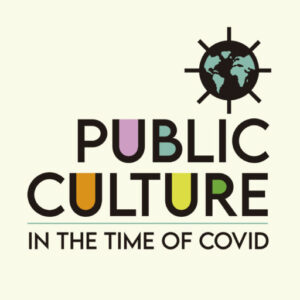Public Culture (In the Time of COVID)
IICS 605: Class of Fall 2021
FOR IMMEDIATE RELEASE

Graduate students from the Royal Roads University Intercultural and International Communications program create digital public access resource for public culture institutions and organizations.
December 16, 2021, Victoria, BC – Public Culture (in the Time of COVID) is a graduate course imagined and taught by Dr. Wendy Leeds-Hurwitz, through the Master of Arts in Intercultural and International Communication (MAIIC) at Royal Roads University, Victoria, B.C., Canada.
Launched in the spring of 2021, the newly revamped course asked students to conduct a series of case studies that examined institutions and organizations that best represent a facet of public culture: public space, public memory, public art, and public event.
Pre-pandemic, students studied local public culture organizations, such as museums, galleries, community theatres and events, then created documentaries about what they’d learned. Pandemic restrictions prevented many students from visiting these organizations in 2020. Like the organizations themselves, the students looked for ways to connect and interact. The solution for both was to go digital.
The overall project began with the research question, “How can a public culture organization / institution get the culture to the public during a pandemic?”
Students were tasked to create case studies to examine how institutions and organizations modified or transformed their programming in order to become accessible to the public when they were forced to temporarily close their doors. In many cases, organizations expanded their reach and introduced themselves to a wider global audience via digital and virtual programming. The spring 2021 project culminated in a Public Culture website that showcased all of the case studies, and two social media channels: Instagram and Facebook.
“The pandemic forced many public culture organizations and institutions to wonder how to get the culture to the public when the public has been in lockdown mode and the physical location they would typically visit has been closed,” says Dr. Wendy Leeds-Hurwitz, associate faculty at RRU and Professor Emerita at the University of Wisconsin-Parkside, “COVID will end, but the move to more digital content seems unlikely to go backwards, so in order to understand our future as it is unfolding we studied what happened to public culture in 2020 and 2021.”
Based on the success of the first iteration of Public Culture (In the Time of COVID), Dr. Leeds-Hurwitz ran the course again in the fall of 2021. This cohort chose to create a public access Google resource available to anyone interested in their findings. This format allows the user to organize and sort the information based on the type of institution, topic or approach that most interests them.
A total of 44 institutions and events were studied to identify best practices, innovative ideas and success stories. The cohort found that organizations with an existing or even burgeoning digital program were most prepared to reimagine their programming and public outreach due to the limitations of the pandemic. Many institutions were able to leverage the pandemic to embrace creative solutions and accelerate their online content strategy despite having few resources in place.
“The swift transition to digital meant that institutions could continue to reach their existing audience, and in fact, some organizations broadened their reach to access markets typically beyond their scope of influence”, says Jazmine Beddard, a representative of the student cohort.
“The famed Edinburgh International Festival is an excellent example of a public event that was reshaped online in the face of restrictions. The organizers pivoted to provide an at-home augmented reality experience, provided high-quality free streaming of festival performances and ultimately reached over 1 million views of online content in the 2020 ‘cancelled’ festival year”.
From storywalks for kids with the Los Angeles Public Library, to street art festivals produced by the Vancouver Mural Festival, to live recreations of works of art by the Albright-Knox Art Gallery, institutions have found innovative ways to engage with the public and fulfill their mission outside of their four walls.
Access the full public Google resource.
-30 –
For more information:

